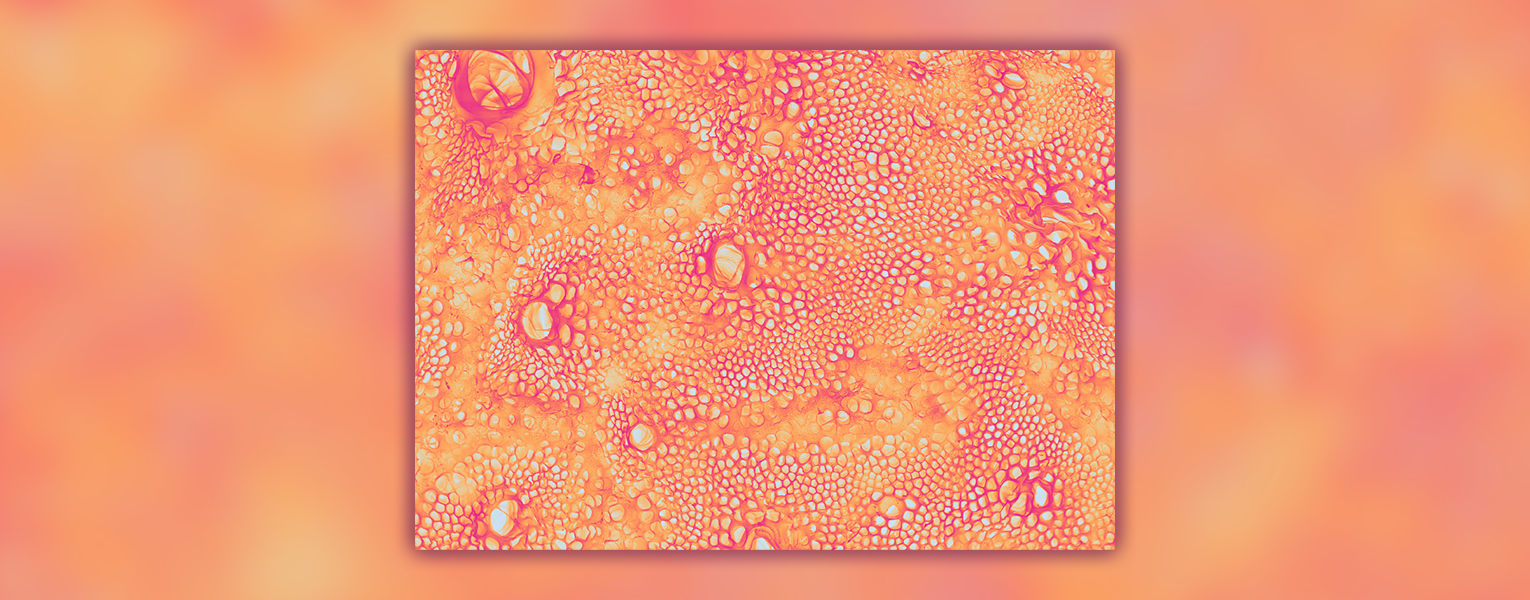10/17/2022
Discovery Beyond the Surface
Visualizing Drug Delivery Properties of Hydrogel
The leaves of the henna tree, or Lawsonia inermis, provide a reddish-brown dye used in the ancient practice of ‘henna’ found in Asian cultures to create designs on the skin symbolizing celebration and tradition. While the the plant’s product can be used for the temporary “tattoo” art, it’s leaves are also enriched with medicinal properties that have been used as a therapeutic agent for thousands of years according to experts in traditional medicine.
Inspired by the microbial properties of henna, Satviki Singh, an undergraduate student at the Harriet L. Wilkes Honors College at Florida Atlantic, and recent second place winner in the 2021 FAU Division of Research’s annual Art of Science photography contest, used this muse to fuel her initial research journey of making a henna extract-based antibacterial hydrogel scaffold. Now, pictured in vivid gold and pink hues, Singh studies the properties of hydrogel for potential drug delivery affectiveness.
“The goal behind my research is to better understand how the morphological properties of hydrogels differ with various levels of silver nitrate (antiseptic chemical compound) and how these properties impact their ability to load and unload wide spectrum antibiotics,” Singh said. "Part of my research includes characterizing the hydrogels and analyzing the relationship between chemical and structural properties with their drug delivering properties, and as shown in my Art of Science photo submission, I am collecting data on the pore size and structure of the various samples.”
To capture this image, Singh used both an ethanol solution and a critical point dryer from the FAU Owls Imaging Lab to dehydrate the hydrogel, stained the sample in thin layers of gold and then imaged the sample under scanning electron microscope (SEM) at 200 um magnification.
“While I could analyze the unique properties of hydrogel and use vocabulary comparing and contrasting my findings, providing images of my samples allows people to see the differences and understand the findings more clearly,” Singh said. “Art allows us to visualize, and visualization makes it easier to study and understand scientific principles and findings, especially for those in unrelated fields and do not have to background knowledge to understand the data or analysis.”
If you would like more information, please contact us at dorcommunications@fau.edu.

